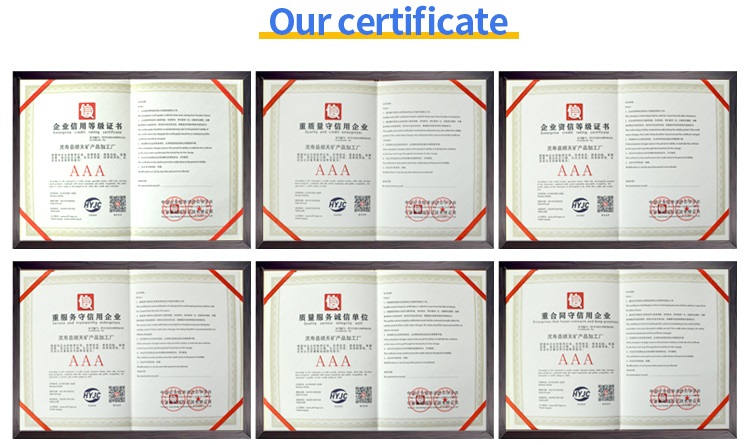
glass microbeads
The Versatile Applications of Glass Microbeads
In the realm of materials science, glass microbeads have emerged as a fascinating topic of discussion due to their unique properties and versatile applications. These tiny, spherical particles, typically ranging in diameter from 1 to 100 micrometers, are composed of silica and other glass-forming materials. Their exceptional characteristics make them an invaluable resource across various industries, from cosmetics to construction. This article explores the properties, production processes, and diverse uses of glass microbeads.
Properties of Glass Microbeads
One of the most significant features of glass microbeads is their low density, which allows them to float on liquids, making them ideal for various applications in the medical and cosmetic fields. Additionally, these microbeads exhibit high chemical stability, resistance to moisture, and excellent thermal properties. Their smooth and round surfaces enhance their flowability, allowing for easy mixing and application in different formulations. The optically clear nature of glass microbeads also offers advantages in applications requiring light transmission or reflection.
Production Processes
The production of glass microbeads involves several stages, including raw material selection, melting, and shaping. Typically, silica sand, soda ash, and other additives are combined and heated to form molten glass. This molten glass is then processed through methods such as spraying or crushing to create microbeads of desired sizes. Advanced techniques may also include air classification, which separates microbeads based on their size and density, ensuring uniformity in the final product.
The manufacturing process is closely monitored to ensure that the microbeads meet strict quality control standards. This attention to detail is critical because even minor variations in size or composition can significantly influence the performance of the microbeads in their intended applications.
Applications in Various Industries
glass microbeads

1. Cosmetics and Personal Care Glass microbeads have found a prominent place in the cosmetics industry, particularly in exfoliating products and as filler materials. Their gentle abrasive nature makes them ideal for facial scrubs, providing a mild exfoliation that helps remove dead skin cells without causing irritation. Additionally, glass microbeads are used in foundations, nail polishes, and other makeup products to enhance texture and improve the overall finish.
2. Pharmaceuticals In the pharmaceutical sector, glass microbeads are utilized as drug carriers for targeted delivery systems. Their biocompatibility and inertness allow them to encapsulate drugs effectively, ensuring that the medication is released in a controlled manner over time. This property is particularly beneficial for treatments requiring a sustained release, minimizing side effects and improving therapeutic efficacy.
3. Construction Materials The construction industry utilizes glass microbeads in various applications, including lightweight concrete and coatings. When mixed with concrete, they contribute to reduced weight while maintaining structural integrity. This characteristic is crucial for applications requiring lighter materials, such as pre-cast concrete elements. Furthermore, glass microbeads can enhance the reflective properties of coatings, making them popular in road marking paint for improved visibility.
4. Industrial Applications In industrial settings, glass microbeads are used as blasting abrasives for surface preparation and cleaning. They provide an effective means of removing rust, paint, and contaminants without damaging the underlying material. Additionally, glass microbeads can be incorporated into composites and reinforcements, imparting additional strength and durability to products ranging from automotive parts to consumer goods.
5. Environmental Applications The environmental sector has also recognized the potential of glass microbeads. They can be used in filtration systems to remove contaminants from water, aiding in pollution control. Their chemical stability ensures that they do not leach harmful substances back into the environment, making them a sustainable choice for various environmental applications.
Conclusion
The unique attributes and versatile applications of glass microbeads make them an essential material across numerous industries. As research continues to uncover new possibilities and enhancements, the future of glass microbeads looks promising, with potential innovations that could lead to even more efficient uses. From personal care products to advanced construction materials, the impact of glass microbeads continues to grow, revolutionizing how we think about materials in contemporary applications. Their ongoing development promises not only to enhance existing technologies but also to pave the way for new solutions to persistent challenges across various sectors.
Share
-
Premium Pigment Supplier Custom Solutions & Bulk OrdersNewsMay.30,2025
-
Top China Slag Fly Ash Manufacturer OEM Factory SolutionsNewsMay.30,2025
-
Natural Lava Rock & Pumice for Landscaping Durable Volcanic SolutionsNewsMay.30,2025
-
Custom Micro Silica Fume Powder Manufacturers High-Purity SolutionsNewsMay.29,2025
-
Custom Mica Powder Pigment Manufacturers Vibrant Colors & Bulk OrdersNewsMay.29,2025
-
Custom Micro Silica Fume Powder Manufacturers Premium QualityNewsMay.29,2025






